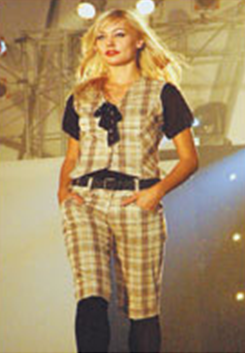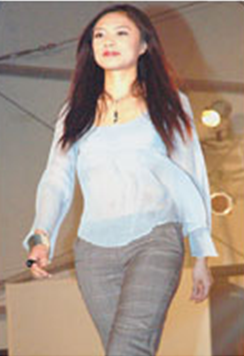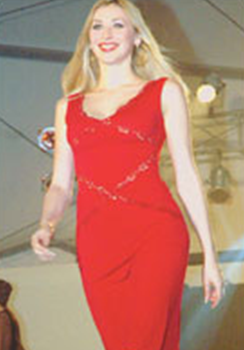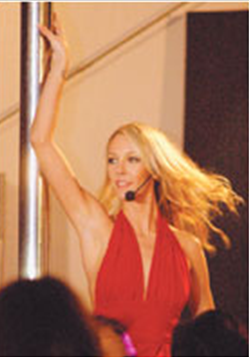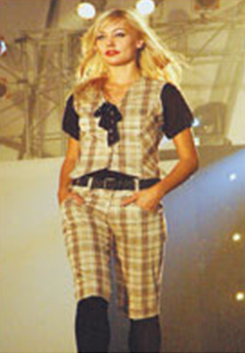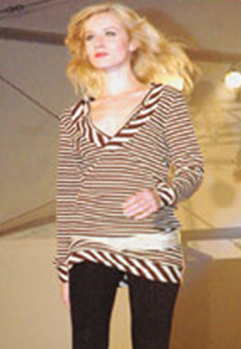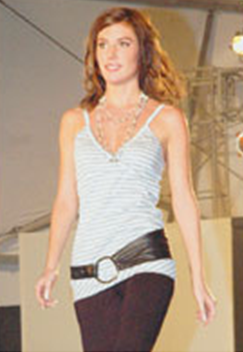Mehmood Bhatti
This is a collection of articles archived for the excellence of their content. Readers will be able to edit existing articles and post new articles directly |
Mehmood Bhatti, fashion demigod
French (un)dressing
By Shehryar E. Qureshi
That Mehmood Bhatti is the darling demigod of the Pakistani fashion industry is an achievement all the more remarkable by virtue of the fact that he does not even practice in the country. It is in France that his label is based and booming. However, when you consider that his castoffs-to-couture rise in Paris in the 1980s has been firmly affixed in the lexicon of local pop culture, and that he descends periodically to delight his former countrymen with the fruits of his labour (in the form of fashion and philanthropy), it comes as little surprise that he should occupy such an esteemed position.
Bhatti’s recent foray into the country is marked by a sequence of charity fashion shows to raise funds for Umeed-i-Noor, an organisation devoted to caring for and rehabilitating children with special needs. More specifically, it is seeking to collect enough for a customised home for such kids. The first of these shows (to be staged in Lahore, Islamabad, and Faisalabad subsequently) was held in Karachi recently at the Pearl-Continental Hotel for a stunningly exclusive audience.
The evening held the promise of a Parisian fashion parade replete with a bevy of French belles; and when Ayesha Sana, the mistress of ceremonies and rouser of charitable spirit, finally retired offstage with a handful of hefty early bird pledges for donation, and the obligatory smoke machine heralded the commencement of the programme, the viewers immediately caught on that this would not be an average run-of-the-ramp show.
What it turned out to be was a full-fledged extravaganza of entertainment — French style. There was lip-synching and dancing (including a couple of mesmerising segments of ballet and belly-dancing), performed in solos and in groups. The clothes were being displayed in the usual fashion, but they did not command the same attention as the accompanying performances by the talented French ladies (who did double-duty as models). Every few turns on the catwalk were followed by a synchronised group dance à la Pussycat Dolls, which then gave way to a solo number.
A few of the outfits did pique one’s interest for their potential to cross over into the Pakistani wardrobe. But on the whole, the clothes were not designed to be accessible to the locals. From a western standpoint, it was a decidedly functional collection — so much so that one could almost say that it lacked the charismatic elements of high-end designer wear. In terms of pizzazz, it ranked right up there with retailers such as Liz Claiborne or Anne Klein
The spectators were left enthralled by a dazzling lineup that was nothing short of a cabaret. And owing to the ladies’ stage costumes that curiously dissipated to bikini-like proportions with progressive routines, clothes were the last thing on anyone’s mind. But of course, no review of a fashion show can be complete without a few words on the clothes themselves.
In between the cornucopia of entertainment, Bhatti exhibited his autumn-winter collection, which was unapologetic in its adherence to the latest western tastes and trends. From the colours to the cuts, there was little to entice the average eastern palate.
The clothes were swathed in the somber shades of winter — black, grey, beige, silver, and gold — tempered with a few nods to colour in the form of red and sky blue. The line consisted of knitwear to a large extent, with all the fabrics having been produced in the domestic market. There was a strong emphasis on opaque tights, slim shorts and pants, gathered and godet skirts, and deep V-necked tops with flared sleeves. The black tights were a staple of every segment in the collection as Bhatti liberally paired them with shorts, pants, and dresses alike.
A few of the outfits did pique one’s interest for their potential to cross over into the Pakistani wardrobe (albeit with a few alterations), such as the derriere-encasing sweatshirt-style mini-dresses, the lace leggings worn underneath knee-length cigarette pants, and a two-toned multi-tiered skirt that gave the illusion of one layer being the bordered hem of another. But on the whole, the clothes were not designed to be accessible to the locals.
From a western standpoint, it was a decidedly functional collection — so much so that one could almost say that it lacked the charismatic elements of high-end designer wear. In terms of pizzazz, it ranked right up there with retailers such as Liz Claiborne or Anne Klein. But then again, it is his label’s practical wearability that makes Bhatti the phenomenon that he is; and there is no denying that any of his pieces could have been plucked right off the runway and worn as-is by the average French woman.
For the average Pakistani woman however, the collection held little more than a slight entertainment value, for it did not even attempt to fit her tastes. The outfits on the ramp were as relevant to the Pakistani audience as a collection of fur coats; and it was sufficiently clear that Bhatti was not interested in penetrating the Pakistani women’s wear market.
With the clothes thus being relegated to the status of yet another act in the variety show, one got the impression that they were simply an excuse to rouse some fanfare for a label that does not elicit the same kind of breathlessness in the highly demanding European fashion industry. And so what the show ultimately whittled down to was an enjoyable way to spend an evening, and in that respect, it was a runaway success.
